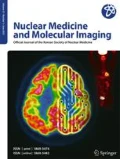Abstract
The acquisition of an 18F-FDG PET-CT scan in patients with suspected paraneoplastic cerebellar syndrome can be helpful in determining the origin of a neoplasm because of its high sensitivity and also helps guide the neurological development course depending on the degree of incorporation of 18F-FDG to the cerebellar parenchyma when compared with the rest of the brain.





References
Castelnovo G, et al. FDG-PET hypermetabolism in paraneoplastic cerebellar degeneration. Acta Neurolg Belg. 2011;111(2):165.
Choi KD, et al. Cerebellar hypermetabolism in paraneoplastic cerebellar degeneration. J Neurol Neurosurg Psychiatry. 2006;77(4):525–8.
Dalmau J, Rasenfeld MR. Paraneoplastic syndromes of the CSN. Lancet Neurol. 2008;7(4):327–40.
Marchand V, et al. A rare gynecological case of paraneoplastic cerebellar degeneration discovered by FDG-PET. Gynecol Oncol. 2007;105(2):545–7.
Shinohara Y, et al. Detection of primary tumor in paraneoplastic cerebellar degeneration by FDG-PET. Ann Neurol. 1998;43(5):684.
Vilouta M. y cols. Síndrome cerebeloso paraneoplásico como primera manifestación de un cáncer de ovario. Clin Invest Gin Obst. 2007;34(4):151-3.
Monge. Adenocarcinoma invasor primario de trompa de Falopio concomitante con enfermedad pélvica inflamatoria aguda. Comunicación de un caso y revisión de la bibliografía. Ginecol Obstet Mex. 2008;76(2):118-24.
Salmerón-Atoa P, et al. Degeneración cerebelosa paraneoplásica como inicio de un carcinoma indiferenciado de células pequeñas de páncreas. Rev Neurol. 2002;35(12):1112–5.
Tanaka Y, et al. Paraneoplastic cerebellar degeneration with fallopian tube adenocarcinoma. Gynecol Oncol. 2005;99:500–3.
Berner U, et al. Paraneoplastic syndromes: detection of malignant tumor using 18 F-FDG-PET. Q. J Nucl Med. 2003;47:85–9.
Panegyres P, Graves A. Anti-Yo and anti-glutamic acid decarboxylase antibodies presenting in carcinoma of the uterus with paraneoplastic cerebellar degeneration: a case report. Journal of Medical Case Reports. 2012;6:155.
Author information
Authors and Affiliations
Corresponding author
Rights and permissions
About this article
Cite this article
López, N.O., González, D.P., García, J.A.R. et al. Paraneoplastic Cerebellar Degeneration as Initial Presentation of Papillary Carcinoma of the Fallopian Tube: Evaluation and Usefulness of 18F-FDG PET-CT. Case Report and Literature Review. Nucl Med Mol Imaging 47, 55–60 (2013). https://doi.org/10.1007/s13139-012-0180-6
Received:
Revised:
Accepted:
Published:
Issue Date:
DOI: https://doi.org/10.1007/s13139-012-0180-6

